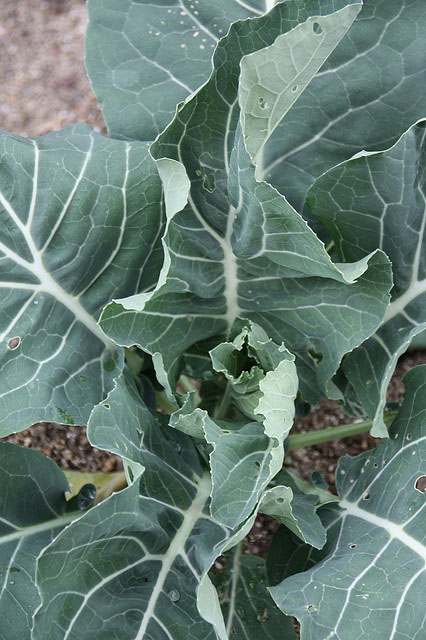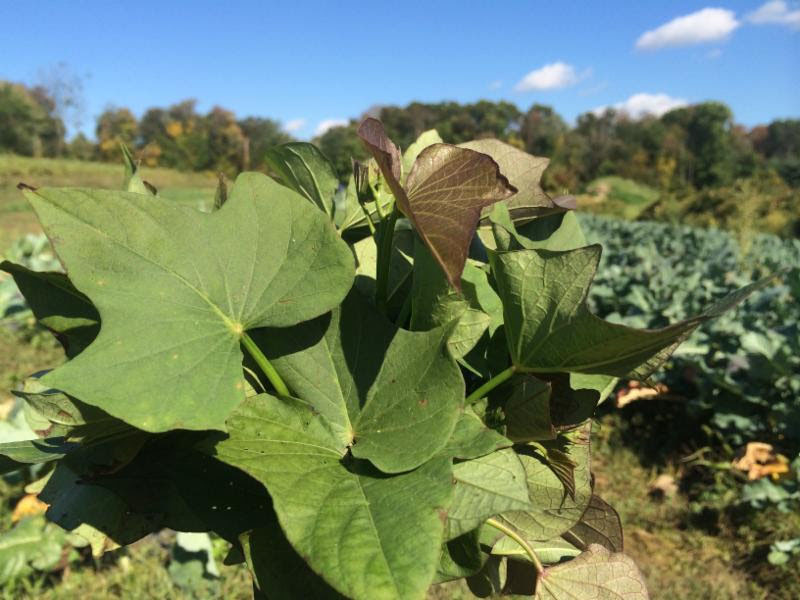One of my favorite things about participating in a CSA program (Community Supported Agriculture) is learning about new foods. Even after five years of membership in various CSAs in New England, I am still surprised by new and exciting foods each season.
This year’s most pleasant surprise was sweet potato greens. Our very own farmer didn’t realize these beautiful greens were edible until this year, and boy were we happy that he shared his newfound secret! These beautiful greens, shown below, look like ivy and taste like spinach. They’re a bit tough to eat raw, but they are delicious sautéed simply in olive oil with onions and garlic and could be used as a substitute for almost any other cooking green.
This year my eyes were opened to a number of other tasty greens: turnip greens, kohlrabi greens, radish greens, broccoli greens and carrot greens. I had been receiving these greens in my baskets for years and had been, gulp, composting without a second thought. Much to my surprise, all of these root tops are edible and delicious and can be used in much the same way as more common greens such as kale or Swiss chard — and they are just as nutritious. Two veggies for the price of one, now that’s a bargain!
 Turnip greens and radish greens cook quickly and have a slight spiciness to them. Kohlrabi greens and broccoli greens (pictured at right) are a bit tougher like kale, so they require a bit longer cooking time, but are very mild in flavor. Carrot greens can be eaten raw in salads, pureed into pestos or sautéed, steamed or boiled like other greens.
Turnip greens and radish greens cook quickly and have a slight spiciness to them. Kohlrabi greens and broccoli greens (pictured at right) are a bit tougher like kale, so they require a bit longer cooking time, but are very mild in flavor. Carrot greens can be eaten raw in salads, pureed into pestos or sautéed, steamed or boiled like other greens.
Two other discoveries this year were fennel stalks and fronds and leek greens. More often than not recipes only call for the bulbs of these veggies, but the tops are equally usable and tasty. Fennel tops can be used in salads, for example, offering a mild fennel flavor and a pretty green color. Leek stems can be used in sautés and soups, can be battered and fried, or pureed into a yummy dip (to name just a few of their uses).
The web is a great source for information and recipes on unusual greens. Search by specific type or search “unusual greens.” Also check out the cookbook Root-to-Stalk Cooking: The Art of Using the Whole Vegetable by Tara Duggan.
Given how delicious and nutritious all of these greens are it is both a shame and a mystery that they so commonly go wasted. Where along the line did we lose our collective wisdom about these vegetables full uses?
With 40% of food grown and raised in the U.S. wasted every year, rediscovering unusual greens is another fun and easy way that we can all reduce our individual food waste impact, while saving money and eating our way to a healthier body and planet.
Katrina Kazda
Director of Programs
Find this article interesting? Donate now to support Sustainable America.
RELATED ARTICLES
Skin to Seed: How to Eat an Entire Pumpkin
How CSAs Help Farmers During Times of Drought
5 Websites that Help Home Cooks Waste Less
Broccoli greens photo: Kazutaka Nakano via Flickr

